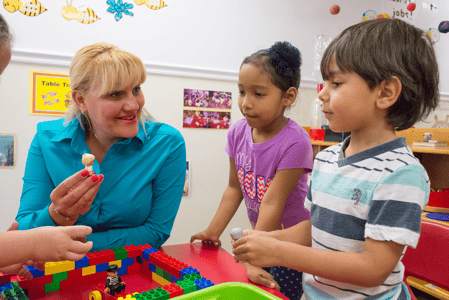
How can we expect teachers to prepare children for kindergarten when the CLASS dimension, Regard for Student Perspectives (RSP), contradicts some of the very behaviors they need to learn?
This question was recently posed to me by a center director. Specifically, she was referring to certain goals children in her pre-K program were expected to attain in preparation for kindergarten—goals like paying attention to adult-directed tasks for structured periods of time and listening to stories without interrupting. At first glance, with behavioral markers such as “shows flexibility,” “encourages student talk,” and “allows movement,” I could understand why she might assume RSP contradicts these pre-kindergarten goals; however, as someone that studies the CLASS tool nearly every day, I want to challenge this assumption.
One of the most common misconceptions surrounding Regard for Student Perspectives is that it means letting children completely “run the show,” resulting in chaos and a disregard for behavioral expectations. However, effective regard for children should never result in chaos. In fact, teacher behaviors such as setting clear expectations and supporting learning goals can align quite nicely with effective RSP. A close read of the pre-K manual supports this idea:
- On Flexibility: “Being flexible and going along with students’ ideas does not distract from the lesson but allows the teacher to incorporate the students’ interests and ideas into the lesson’s goals.”
- On Student Expression: “During center or free time, students talk openly with teachers and with one another. During more structured teaching activities, teachers encourage a balance of student and adult talk by asking questions and making sure that students are given opportunities to be part of the activity and to share their perspectives.”
- On Allowing Movement: “Although teachers should have clear behavioral expectations for students, teachers high on this scale set behavioral expectations that are in line with students’ development needs and appropriate to the activity at hand.”
Regard for Student Perspectives might just be my favorite CLASS dimension. It’s my favorite because it takes children—including their ideas, interests, and even leadership potential—very seriously. Rather than a detriment to kindergarten readiness, effective RSP can support children’s potential as future kindergartens, students, thinkers, and leaders.
Want to learn more about RSP? Subscribe to our Video Library to watch authentic classroom examples of this, and other CLASS dimensions, in action!
How does the Pre-K CLASS Tool mesh with kindergarten readiness goals in your program? Share your thoughts, challenges, and questions below!
